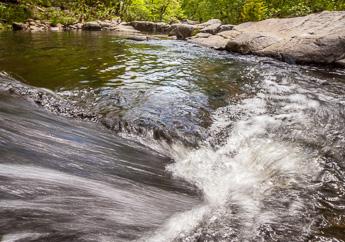
The Missouri Department of Natural Resources is responsible for protecting and improving water quality and ensuring compliance with the federal Clean Water Act (CWA) by implementing the Missouri Clean Water Law. To be able to prevent and address problems in our water, the department needs good information about the status of our water resources, potential and actual threats, options for addressing the threats, and data on how effective management actions have been. The department's water quality monitoring efforts are focused on providing that critical information.
Missouri's Water Quality Monitoring and Assessment Program
Under Section 106(e)(1) of the Clean Water Act, EPA provides monitoring support to eligible state monitoring programs. EPA's elements of a state water monitoring and assessment program guidance recommends 10 basic elements of a state water monitoring and assessment program. These elements, in addition to Missouri's proposed monitoring strategy, are described in the department's A Proposal for a Water Quality Monitoring Strategy for Missouri report.
